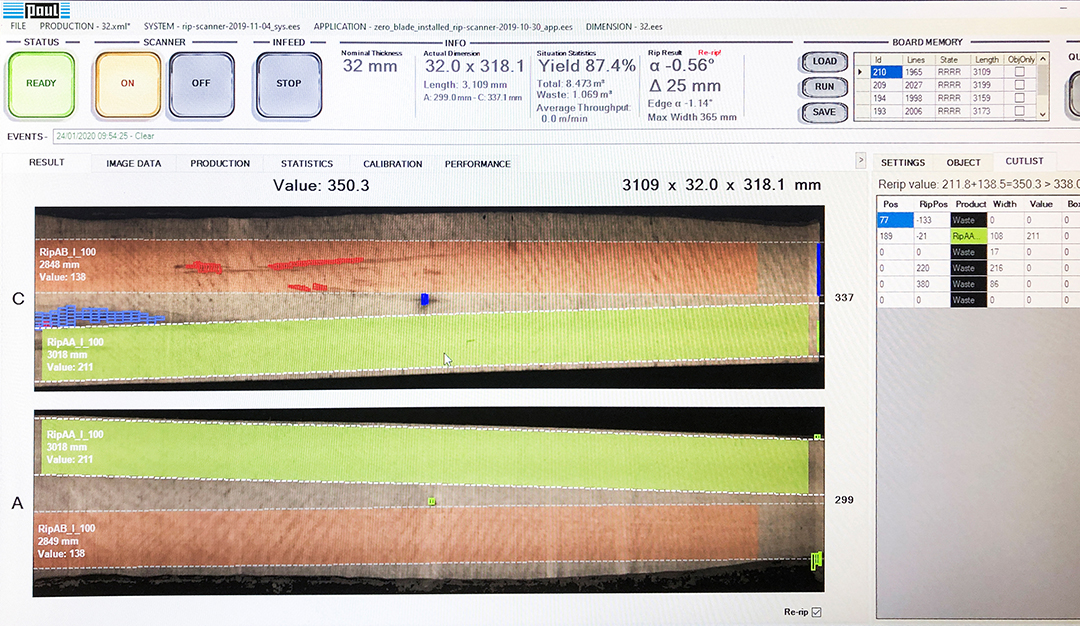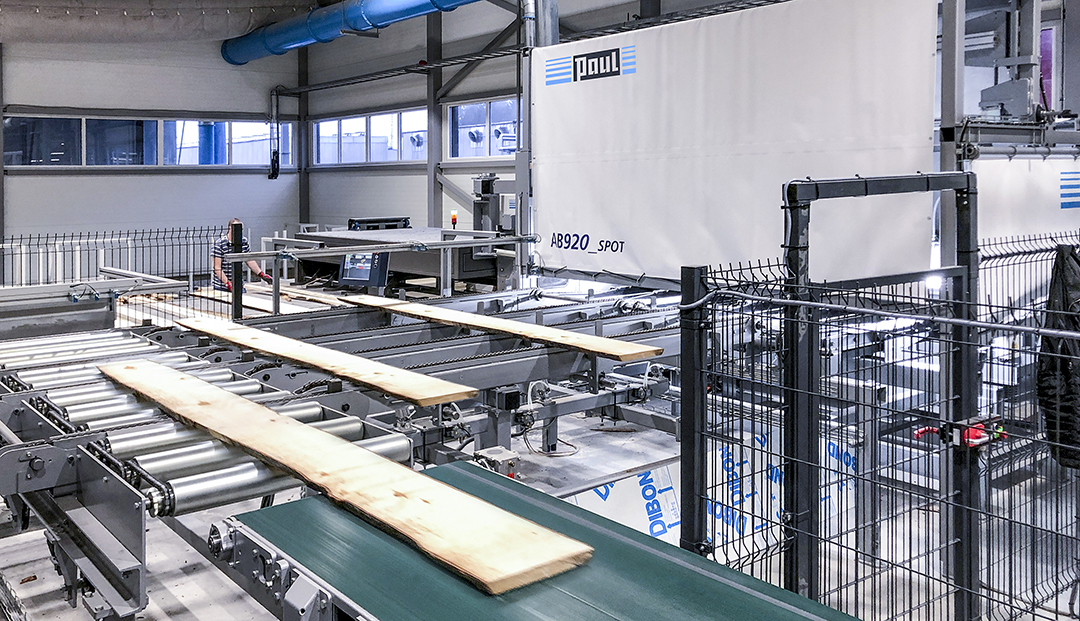 The recently developed Paul Scanner for optimized ripping of solid wood.
The recently developed Paul Scanner for optimized ripping of solid wood.
A traditional wood processing company from Latvia invests in innovative production facilities developed by PAUL Maschinenfabrik (Dürmentingen, Germany) in order to further enhance its timber yield when manufacturing sauna bench laths and wall paneling.
The business relationship between both companies, existing since 2007, was successfully resumed at the end of last year. Since then, the production facilities in Latvia have been supplemented by a RAPID optimizing cross-cut saw with scanner and sorting system as well as an automatic ripping system. It is mainly white bench laths and wall paneling elements that are manufactured in these two systems provided by PAUL and they are required to be perfectly accurate and as long as possible. Engaging in this project, the Southern German machine manufacturer broke new ground when developing its very first rip scanner, which operates in longitudinal throughfeed. In conjunction with the AB920_SPOT feed system and a flexible CGL multirip saw, a precise and powerful system was created.
The scanner technology this system uses is based on the well-established Paul Wood Scanning System. Its software was revised and extended by optimization algorithms for ripping systems. It can be adjusted to meet individual customer demands, desired productivity, material data, and type of wood. The rip scanner processes unedged as well as pre-edged workpieces featuring various quality criteria. In order to maximize the yield, the system not only regards the desired ripping widths and their values, but also possible cutting lengths. This two-dimensional surface optimization results in a very high added value to the system. The AB920_SPOT feed system identifies the position of the scanned workpieces and aligns them ahead of the CGL multirip saw with millimeter precision and in consideration of the targeted optimization results.
During the ripping process, the machine generates up to four strips, and, when required, one return piece, too. The scanner re-captures this return piece, which already had been involved in the first pass of optimization, in order to further improve the result, where necessary. The workpiece is then being cut at a different angle than before. This is how the rip scanner is able to position the products ideally around the defects of the raw wood, not being tied to a fix cutting direction. It is a complete innovation that return pieces are optimized during the first scanning pass and it enhances the yield considerably.
During the next step, the workpieces are planed and then cut to length by the RAPID_SCAN optimizing cross-cut system. Application-specific aspects made the two companies decide on using two individual systems for this project. On the one hand, the second scanner enhances the optimization quality when cutting, because possible wood defects can be easier identified after planing. On the other hand, the flexibility of the entire system is increased, since, for example, separate ripping and cutting tasks can be performed as well. Yet, this production process could also be conceivable by means of a concatenated system with only one scanner supplying both circular saws with data.
Providing this new technology, PAUL offers an extremely efficient entry into the automatic and optimized ripping of solid wood. It is the combination with the AB920_SPOT feed system that makes the high-precision alignment of workpieces scanned in longitudinal throughfeed possible at all. This feed system cannot only be used in conjunction with a PAUL scanner, but also with all other types of rip scanners.

